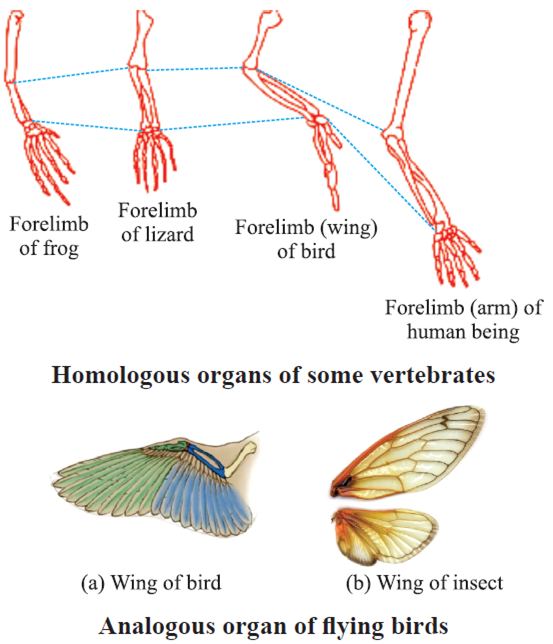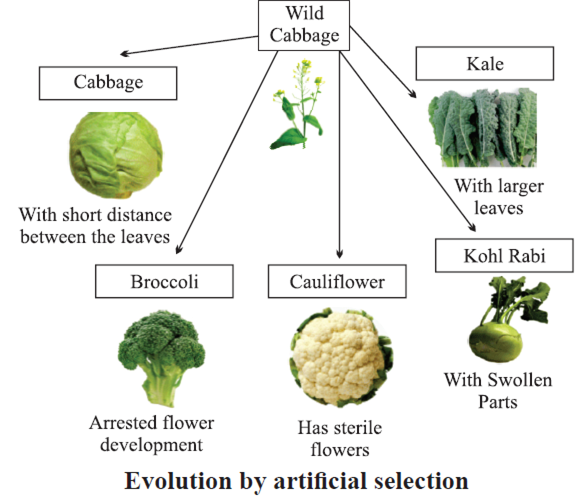CBSE
Class 10 Class 12
Both evolution and classification are interlinked.

Evolution takes place in stages i.e., bit by bit generations.
I. Fitness Advantage
Evolution of Eyes: Evolution of complex organs is not sudden. It occurs due to minor changes in DNA, however, takes place bit by bit over generations.
II. Functional Advantage
Evolution of Feathers: Feathers provide insulation in cold weather but later they might become useful for flight. Example, Dinosaurs had feathers, but could not fly using feathers. Birds seem to have later adapted the feathers to fly.

Evolution by Artificial Selection
Humans have been a powerful agent in modifying wild species to suit their own requirement throughout ages by using artificial selection. E.g.,
(i) From wild cabbage many varieties like broccoli, cauliflower, red cabbage, kale, cabbage and kohlrabi were obtained by artificial selection.
(ii) Wheat (many varieties obtained due to artificial selection).
The preserved remains of animals or plants or other organisms from the distant past are called fossils.
Fossils provide the evidence that the present animal have originated from previously existing ones through the process of continuous evolution. Fossils can be used to reconstruct the evolutionary history of an organism. The distribution pattern of fossils shows that the ancient fossils present in the bottom rocks are simple, while the most recent fossils found in the upper strata are more highly evolved.
Fossils also indicate connecting link between the two groups of organisms. For example, Archaeopteryx is a connecting link between reptiles and birds.
Homologous Organs : (Morphological and anatomical evidence). These are the organs that have same basic structural plan and origin but different functions. Homologous organs provide evidence for evolution by telling us that they are derived from the same ancestor.
For example; the forelimbs of all tetrapods are composed of humerus, radio-ulna, tarsals and metatarsals. Yet, the forelimbs of frogs are adapted to a jumping movement, those of birds are used for flying and those of humans are used for handling tools. This shows that frogs, birds and humans have evolved from a common ancestor.
Analogous organs: Organs which have a different design but serve a common function in different animals are called analogous organs. Wings of birds and wings of bat are good examples of a pair of analogous organs. Wings of birds are composed of all the bones of forelimb and are covered with feathers. Wings of bats are mainly composed of the digital bones and a thin membrane covering the structure. Yet wings in both the organisms are used for flying.